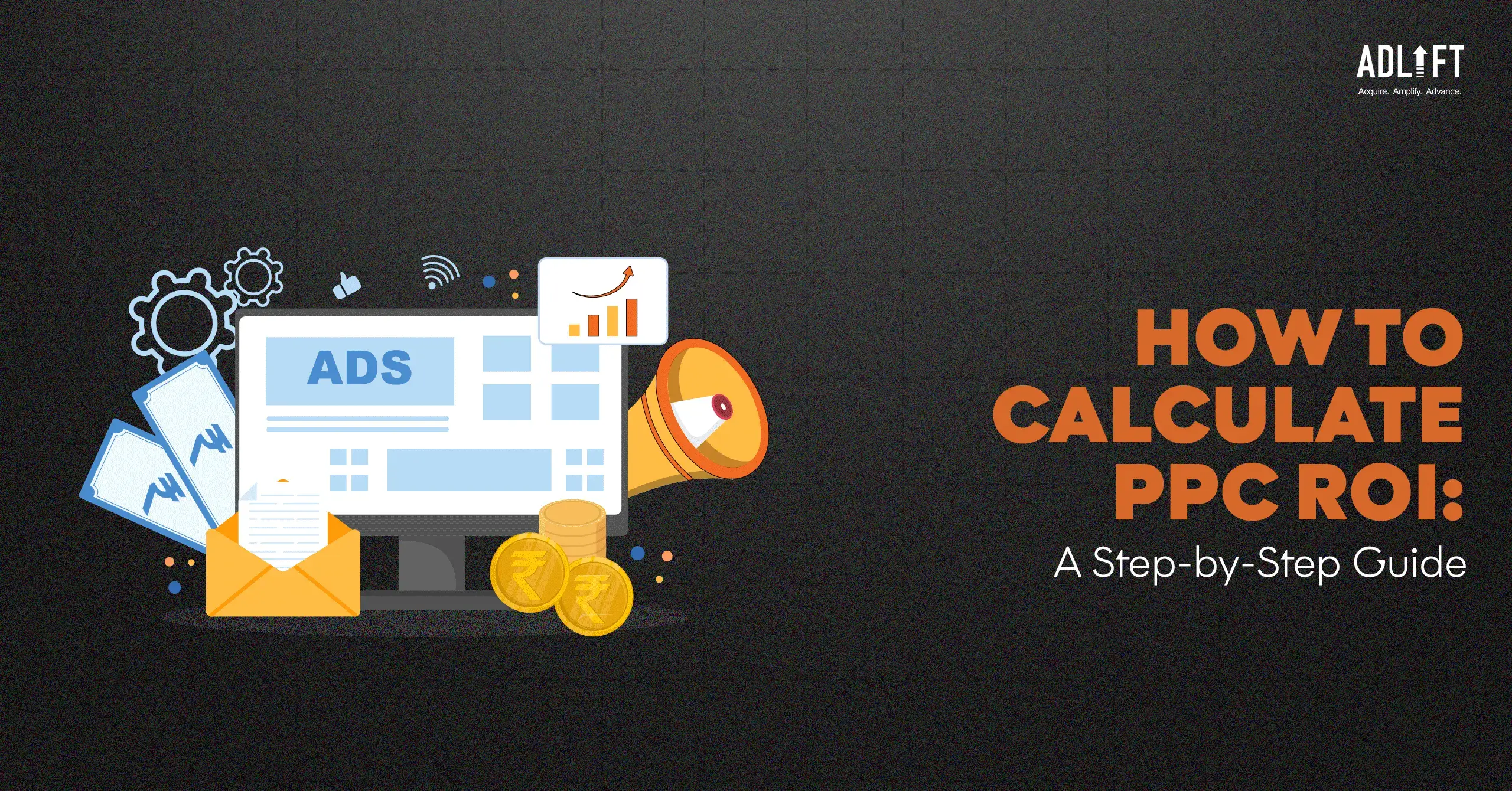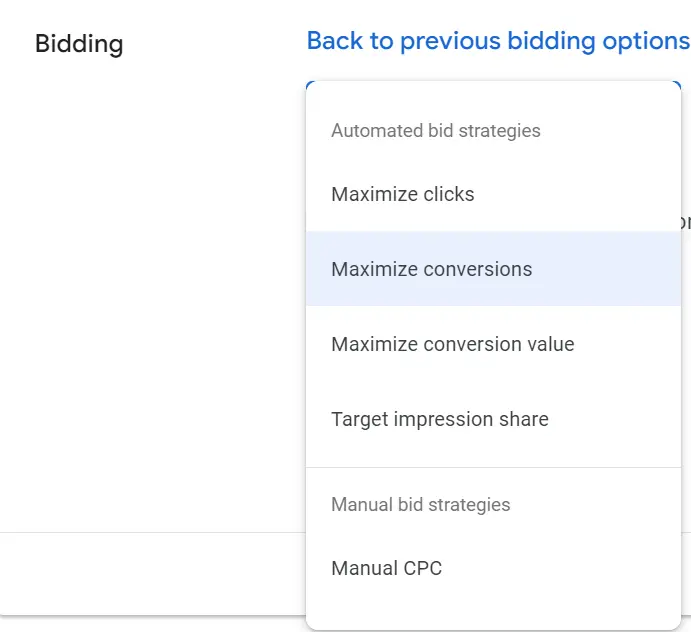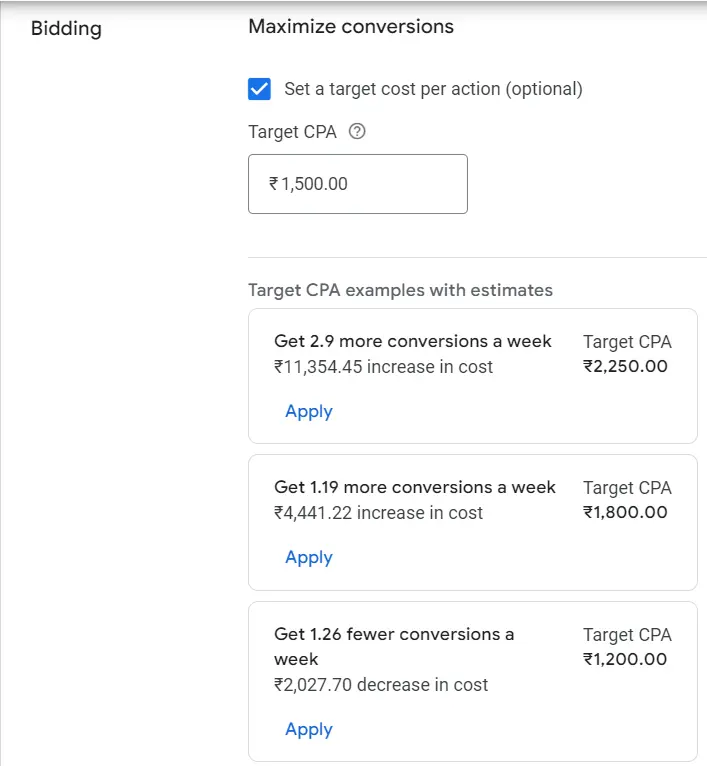PPC ROI: Understanding and Measuring Your Return

Pay-per-click, or PPC revenue, is the most dynamic tool in the digital market. It ensures your ads appear at the top of search bars or across platforms, providing quick visibility. According to Google Ads, businesses made an average of at least $2 in revenue for every $1 spent on Google Ads, highlighting the potential for important returns. To maximise your PPC efforts, understanding and measuring your PPC Return on Investment (ROI) is crucial. This is not just a metric but a key to unlock the potential of your digital marketing strategy.
ROI is a criterion that shows how much revenue your PPC for performance campaigns generates compared to the amount spent. It’s not just a number but a clear picture of your campaign’s effectiveness. Measuring PPC ROI is a strategic move that helps you optimise your budget allocation, enhance your ad strategies, and ultimately boost your bottom line. Understanding these metrics is not just significant; it’s a game-changer for any marketer aiming to maximise their marketing efficiency.
Hence, in this blog, you will get to know about the following:
-Why Measuring PPC return on investment matters
-How to calculate PPC ROI
-Interpreting the PPC ROI
-Improving the PPC campaigns for better ROI
-The importance of PPC ROI
Read the following blog so that you can get more insight about PPC ROI
Ready to steal real Growth? Contact AdLift!
Increase Your Marketing ROI: Why Measuring PPC Return on Investment Matters
ROI is a fundamental concept in marketing and finance. It helps you measure the profitability of an investment and understand whether the money you’re putting into your PPC for performance campaigns is yielding profitable returns. In the context of PPC, ROI provides you insight into how well your campaigns are converting clicks into revenue.
It has been seen that there’s always confusion between Return On Ad Spend (ROAS) and ROI. Well, to begin with, ROAS focuses mainly on the revenue generated directly from the ad spend, not considering other costs involved in running the campaign.
For example, if you spend $1,000 on PPC ads and they generate $2,000 in revenue, your ROAS is 2:1 or 200%. While ROAS is helpful, it does not account for any additional costs, like campaign management fees, design expenses, or software tools, that are integral to understanding true profitability.
ROI, on the other hand, is considered as the total investment, offering a more comprehensive view. The formula for calculating the ROI is:
ROI = (Total Cost)/Total Cost × 100.
A common issue is always focusing on ROAS, which can be misleading. A high ROAS might suggest a successful campaign, but if the total costs are high, the actual ROI might be low or even negative. Hence, while ROAS gives a snapshot of efficiency, ROI can provide a complete image of campaign success, incorporating all expenses.
Setting a particular aim, such as sales targets or lead generation, is crucial before launching a PPC for a performance campaign. This goal can guide your strategy and help you measure the right metrics by ensuring that your campaigns are aligned with all your business objectives.
How to calculate PPC ROI: A Step-by-step Guide
If you are unaware of how to calculate PPC ROI, then you can read the following steps to get a better idea of how to do so:
Step 1: Identify Goals and Conversion Value
So, before dividing into numbers, it’s really important to define your PPC campaign goals. Are you aiming to generate leads, improve sales, or boost brand awareness? Each goal will have different metrics and values associated with conversions. Hence, for instance, an e-commerce store might value conversions based on the average sale value. If your average sale is $50, that will become your conversion value.
Therefore, this clearly shows how defining goals and assigning values can help you better measure the achievement of your campaigns and make informed adjustments as needed.
Step 2: Tracking Key Performance Indicators (KPIs)
To calculate ROI, you just need to track several critical PPC metrics:
- Clicks: It means the number of times your ad has been clicked. This metric will indicate the level of interest that your ad generates.
- Cost-per-click (CPC): The amount you pay for each click. Lowering the CPC can enhance the ROI by reducing costs.
- Conversions: It means the number of desired actions taken by the users (for instance, purchases and sign-ups).
- Conversion Rate: This is the percentage of clicks that result in conversions. A higher conversion rate means better campaign performance.
- Total Ad Spend: It is the total amount spent on the PPC campaign.
Each of these metrics will provide valuable insights into different aspects of your campaign, eventually helping you understand its overall performance. Therefore, tools like Google Analytics and SEMursh are invaluable for tracking these KPIs and providing detailed reports on campaign performance.
Step 3: Calculate ROI with the Formula
Well, you can calculate the ROI with the help of the already available formula that is-
ROI = Total Revenue-Total CostTotal Cost 100
To break it simply, here’s an example of how you can run a PPC campaign:
- Total Revenue: $10,000
- Total Ad Spend: $3,000
- Additional Costs (management fees, etc): $1,000
- Total Cost: $3,000 + $1,000 = $4,000
Hence, by using the formula, your ROI calculation will look like this:
ROI= ($10,000-$4,000)/$4,000*100 = 150%
So this means that for every dollar you spend, you get $1.50 back as a profit.
Knowing these benchmarks enables you to set realistic goals and evaluate your performance against industry standards.
Maximize your PPC For Sale with Adlift’s Expert Time!
Interpreting the PPC ROI
A positive ROI means a profitable campaign, indicating that revenue exceeds costs. Conversely, a negative ROI suggests that you’re spending more than you’re earning, signalling the need for optimisation. Hence, it’s important to analyze ROI alongside other metrics like conversion rate and client lifetime value (CLV) for a comprehensive understanding.
So, for example, if your campaign has a high ROI but a very low CLV, it might indicate that while you’re making immediate sales, the long-term value of your clients is not being maximized. The industry benchmarks for PPC ROI can vary, but generally, an ROI of 4:1 (400%) is considered good.
Improving the PPC Campaigns for a Better ROI
If you want to improve your PPC ROI, then you must take a thorough look at the following strategies:
Targeting and Keyword Research:
First, identify and bid on the most relevant keywords to reach your target audience effectively. There are some tools; for example, if you want to find the right keywords to target, Google Keyword Planner will help you out.
A/B Testing Ad Variations:
Experiment with different ad copies and visuals to see which ones perform best. According to Optimizely, A/B testing can increase conversion rates by 27% on average.
(Two similar ads have been tested in the same campaign with the same landing page but different ad copies. One of the ads yielded better results than the other with improved CTR, CPC, Conversion, and CPA at lower cost spent.)
Ad Copy Optimization:
You can craft a compelling ad copy to increase the click-through rates (CTRs). The ads with strong, clear calls to action and relevant content tend to perform better.
Landing Page Optimization:
You have to make sure that your landing pages are designed with clear calls to action and relevant content for conversions.
Bid Management:
Use the bid management strategies to control the costs and improve ad placement. Tools like Mian Software and Kenshoo can automate and optimize bid adjustments based on performance data.
The Importance of PPC ROI
By measuring and understanding the PPC ROI, you can easily understand the current market trends. This not only helps in evaluating current performance but also helps in making crucial decisions for future campaigns. Just make sure that PPC campaign optimization is an ongoing process. Therefore, regular analysis and adjustments are key elements to increasing your return on investment.
So, by continuously refining your strategies and by keeping a close eye on your metrics, you can ensure your PPC efforts deliver the best possible results, driving more revenue and achieving your marketing goals.
The Real Power of Ongoing PPC Optimization for ROI
Therefore, by now, you must have realized that understanding and measuring PPC ROI can empower you to make data-driven decisions, optimize your campaigns, and achieve your marketing objectives.
You can definitely turn to Adlift for digital marketing solutions. Adlisft’s expertise in PPC management has helped numerous businesses improve their ROI through targeted strategies and innovative solutions. With a team of seasoned professionals, Adlift makes sure that every dollar spent on PPC campaigns delivers maximum value.
Hence, if you are looking to optimize your PPC campaigns and achieve superior ROI, you can surely trust our services, and we will not fail to give you exceptional results!
Transform Your PPC Campaigns with us!






